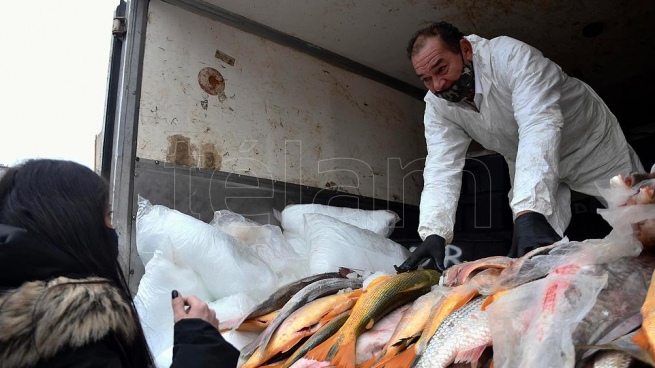The national director of Aquaculture, Guillermo Abdala, affirmed that the activity will reach by 2030 exports for US$ 500 million and 1,000 jobs in projects that are being carried out throughout the country.
“In 2019, 60 tons of fish from aquaculture were exported. In 2020 it was 2,100 tons. In less than five years it will be 30,000 and by 2030 it will be 42,000 tons,” Abdala indicated in a report with Télam.
The official noted that In these two years of management “investors from the fishing industry were linked with aquaculture enterprises for more than US$ 25 millionas well as bets from foreign companies with funds for more than US$ 12 million”.
The following are the main sections of the interview with Télam:
Télam: How did the initiative for aquaculture to have its own area in the Ministry of Agriculture come about?
William Abdala: The new design of the Aquaculture area as a National Directorate was a strategic decision made at the end of 2019. It was defined for the first time in history to create an area at the level and hierarchy of the fishing sector, within the Undersecretary of Fisheries. This definition is taken thinking of the aquaculture production network as a relevant activity, accompanying the global growth scheme, which represents a concrete advance for the economic reactivation of various regions, and which allows the revitalization of local industries, promoting their opening to new markets. From now on, aquaculture production was considered by us as the certain possibility of generating federally distributed quality employment, and with a great contribution to food security.
T.: How is the activity of aquaculture in Argentina?
AG: Currently, 13 species are farmed including fish, bivalves and others, among which trout and pacú stand out, which are equivalent to more than 85% of the almost 2,100 tons produced in 2020. It can still be considered incipient given its size and the productive volumes. However, there are objective conditions that make it possible to project great growth based on incentive policies such as those that have been implemented for two years. Today we estimate reaching 30,000 tons per year in less than 5 years, for a total of US$ 350 million. This without contemplating the differential value in the product relationship and the consumption of fish that can be added in our country, with the enormous value added to population nutrition that this means.
T.: What projects is the Aquaculture Department developing?
GA: Although the activity had a regulatory framework, such as Law 27,231 on Aquaculture of 2015, sanctioned as a growth platform for the activity, it was necessary to put this last instrument into full operation, orienting all the tools with a single purpose, the sustainable productivity. For this, progress was made in institutional agreements that, at the moment, have allowed the full adherence of 13 provinces to the Law. By the same rule, the Regime for the Promotion and Development of Aquaculture was created, which is aimed at financing or co-financing productive projects and important initiatives for the expansion of the activity.
T.: What are the economic projections and expectations for this activity?
AG: The results of this time of work are beginning to be seen, the clearest indicator being the investment initiatives that are being accompanied, and that managed to link investors from the fishing industry with aquaculture enterprises for more than US$ 25 million, as well as bets of foreign companies with funds for more than US$ 12 million, both for the production of rainbow trout in northern Patagonia, and for mussels in Tierra del Fuego.
T.: What advantages does it have over extractive fishing?
AG: It is not about one over the other, but both together as a complement. The growth of Argentine fishing activity, translated into the current export record, cannot be explained without political management based on regulations that protect the sustainability of the activity and the preservation of resources. It is part of the achievement of our Undersecretariat and the Ministry to have designed complementary schemes to draw up an agenda for the future, linking the system of control, supervision, science and technology, applied to sustainable production. In this context, aquaculture takes its real dimension, no longer as a possibility, but as a determining source of quality protein supply, just as it is developed throughout the world. Today China produces more than 60 million tons, Brazil more than 800 thousand; Chile more than a million. And together they export more than US$ 6,000 million. It is expected that for the next few years, aquaculture may reach 60% of the aquatic proteins sold worldwide. Our country cannot be left out of that margin.
T.: Can aquaculture bring foreign currency to the country?
AG: Without a doubt. The set of advances achieved will allow by the end of 2030 to export more than 42,000 tons for US$500 million and generate at least 1,000 jobs. If we take into account the percentage relationship generated by this activity throughout the world, and compare it with the relationship applied to Argentina, where fishing contributes an average of US$ 2,000 million, we can project a leveling estimate on another pile of similar characteristics from of sustainable aquaculture.









